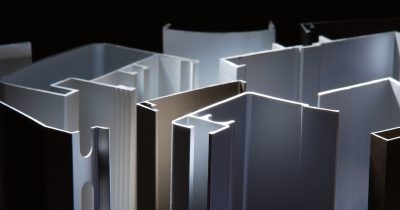What is 6061 Aluminum? Material Overview and Design Considerations

6061 aluminum (6061 AL) is a type of alloy widely used in industrial products, construction materials, and furniture. There are several types of aluminum alloys due to variations in composition and properties such as strength and corrosion resistance. Not all aluminum alloys are the same, each possessing its own characteristics, making it crucial to select the most suitable material based on its intended application. This article delves into the advantages, disadvantages, applications, and distinctions of 6061 AL compared to other aluminum materials.
Table of Contents
What Is 6061 Aluminum?
Aluminum alloys range from the 1000 to 8000 series. 6061 AL falls under the 6000 series and contains magnesium and silicon. Specifically, it contains aluminum (97.9%), magnesium (1.0%), silicon (0.6%), copper (0.28%), and chromium (0.2%).
6061 AL, originally called “alloy 61S,” is commonly circulated in the form of a round bar or plate and is used for various mechanical processes such as machining or bending. Due to its corrosion resistance, it’s often utilized in automotive-related parts. However, caution is required when utilizing joining methods, as it’s not suitable for welding. Typically, fasteners such as screws, bolts, or rivets are preferred. Though welding is not entirely ruled out, achieving sufficient strength can be challenging, hence its limited use.
Advantages of 6061 Aluminum
Excellent corrosion resistance
Its resistance to rust and corrosion makes it suitable for use in harsh environments. Aluminum readily forms an oxide film on its surface, which acts as a barrier against corrosion. Particularly in 6061 AL, the addition of magnesium enhances this property and provides superior corrosion resistance.
High strength with the T6 temper
Untreated 6061 AL has relatively low strength. However, through T6 tempering, it can achieve strength comparable to aluminum alloys in the 2000 series, such as 2017 and 2024 aluminum. T6 tempering involves a series of heat treatment processes, including solution treatment, quenching, and aging. This process helps precipitate copper and magnesium included in 6061 AL, resulting in increased strength. While the tensile strength of untreated 6061 AL is around 125 N/mm², 6061-T6 can increase to approximately 310 N/mm².
Good forgeability
Forging involves shaping metal by applying pressure to heated metal to achieve the desired shape. It’s suitable for automotive structural parts subjected to impact and structural loads or mass production. 6061 AL is highly forgeable compared to other aluminum alloys.
6061 Aluminum Design Considerations
When designing mechanical components in 6061 AL, several key design considerations must be taken into account to ensure optimal performance and durability.
Heat Treatment
A key aspect of working with 6061 AL is its response to heat treatment, particularly the T6 temper. Understanding the effects, such as the increased strength of this treatment on the material’s properties , will help in designing components with the desired mechanical properties.
Machinability
6061 AL exhibits good machinability, allowing for easy fabrication and machining processes such as cutting, drilling, and milling. Designers should optimize the part design to take advantage of the machinability of the material. This includes selecting the appropriate cutting tools, optimizing machining parameters, and minimizing material waste.
Joining Methods
Given the weldability limitations of 6061 AL, designers must carefully consider the joining methods used to assemble components. Mechanical fasteners such as screws, bolts, and rivets are commonly used. While the joining method depends on factors such as the component design, load requirements, and environmental conditions, making space for these attachments in the design phase should be considered.
Surface Finish
The surface finish of 6061 AL parts plays a critical role in both aesthetics and functionality. Designers must specify surface finishes that enhance corrosion resistance, improve durability, and meet aesthetic requirements. Options such as anodizing, painting, or powder coating can provide the desired finish while maintaining the inherent properties of the material. Originally, aluminum scratches easily compared with that of the common aluminum alloy, 5052 aluminum, which has a strength of 47HB. The strength of 6061 AL is 30HB, which is not hard . Therefore, the scratches on its surface can lead to correction because they break the oxide layer.
Corrosion Protection
While corrosion resistant, it would incorporate additional corrosion protection measures, such as surface treatments or coatings, to ensure long-term durability, especially for components exposed to harsh or corrosive conditions.
Applications of 6061 Aluminum
6061 AL is widely used across various applications, including machinery components and household items such as furniture. Let’s explore its primary uses.
Construction materials and building structures
Due to its relatively high corrosion resistance among aluminum alloys, 6061 AL is commonly used in outdoor components such as construction materials and structural elements.
Marine and automotive components
6061 AL has excellent corrosion resistance and is suitable for marine vessel and vehicle parts exposed to seawater and outdoor environments.
Piping
6061 AL is also used as a material for piping.
6061 Aluminum vs. Other Aluminum Alloys
There are many different types of aluminum alloys, each with its own characteristics.
- 2017 Aluminum Alloy
2017 aluminum (2017 AL), like 6061 AL, has poor weldability, meaning both require screws, bolts, and rivets for fastening.
Although the strength of aluminum 6061-T6 has been improved, 2017 AL is stronger. Therefore, if the parts require high strength without corrosion resistance, 2017 AL is preferred. If moderate strength with corrosion resistance is required, 6061-T6 is suitable. - 5052 Aluminum Alloy
The corrosion resistance of 5052 aluminum (5052 AL) is inferior to that of 6061 AL, but 5052 AL also has a high property among aluminum alloys. Regarding strength, 6061-T6 is superior to 5052 AL.
However, the weldability of 5052AL is remarkable. If strength and corrosion resistance are a priority, consider 6061 AL, but if some strength and welding are required, consider 5052 AL. - 6063 Aluminum Alloy
6063 aluminum (6063 AL) is weaker than 6061 AL but has excellent extrudability, corrosion resistance, and surface treatment properties. Shapes such as pipes, angles, and square bars are unique to 6063 AL.
Conclusion
6061 AL is an aluminum alloy known for its excellent corrosion resistance and ability to enhance strength through heat treatment. However, its limitation is weldability. The choice of the appropriate aluminum alloy depends on the specific characteristics required for the application. Understanding the unique features of 6061 AL and other materials is crucial for selecting the most suitable alloy for your needs.
What’s meviy?
On-demand, fast sourcing of quality custom mechanical parts is made possible by meviy.
meviy is one of the most reliable on-demand manufacturing platforms in the US that allows you to get instant quotes for your mechanical parts simply by uploading 3D CAD data. No longer need to create 2D drawings just to quote parts. This platform supports sheet metal fabrication and CNC machining such as milling or turning and has saved time for over 160,000 mechanical designers and purchasers worldwide.






